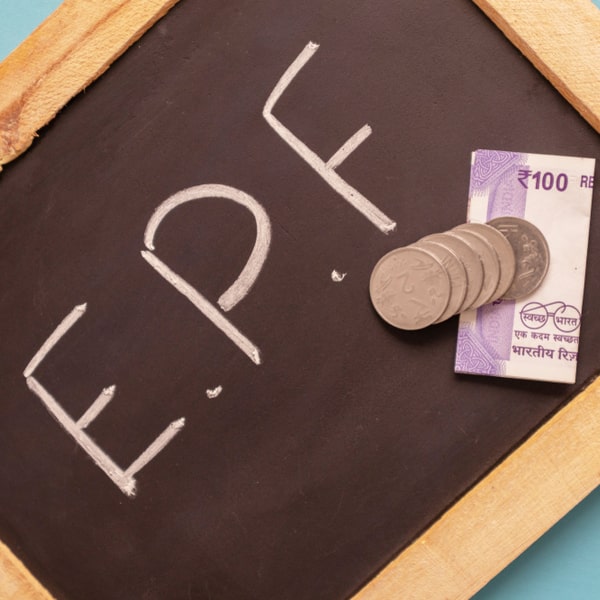Have you completed your tax-saving exercise for the FY 2019-20?
The financial year ending in March is quite a busy month for making tax-saving investments. But, this year due to the lockdown announced on 25 March the Central Board of Direct Taxes extended the deadline for making investments that are eligible for tax saving till June 30, 2020. The date was further extended to 31 July.
So isn’t it good news that you still have about 2 weeks left to make those investments and ensure you save tax for FY 2019-20?
Let’s explore the various tax saving options available for the Financial year 2019-20 for salaried and self-employed individuals
Tax deductions under Sec 80C
Section 80C of the Income Tax Act offers tax deduction of up to Rs 1.5 lakh on making certain investments or payments. In other words, the individual can reduce his/her taxable income by the amount of saving done under this section. This is one of the popular options to save income tax because of the wide range of investments available.
A ready reckoner for some of the options available under Sec 80C
| Investment | Eligibility | Rate of Return | Lock-In Period | Tax Treatment on Return |
| EPF | Any employee with a basic salary of Rs15000 | 8.65%(2019-20) | Till being employed* | Not taxable when withdrawn after 5yrs of service |
| PPF | Any Resident Indian | 7.1% from 01Apr 2020 | 15 yrs- Withdrawal on conditions | Not taxable |
| NPS | Any Indian citizen in the age grp of 18-60 | 8-14% | On retirement | 60% of the corpus is tax-free. Rest in the form of annuity |
| National Savings Certificate | Resident Individuals | 8.6% (current rate) | 5yrs | Interest is Taxable |
| Tax Saver FD | Individuals &HUFs | Depends on the bank | 5yrs | Interest is taxable |
| Sukanya Samruddhi Yojana | Resident Girl Child
(limited to 2 children) |
8.5% | 15 yrs of payment and maturity at 21yrs from the date of opening | Not taxable |
| Equity Linked Saving scheme | Any individual | Market linked | 3 years | Long term capital gain tax of 10% on the gain |
| Senior Citizen Saving Scheme | Senior Citizen | 8.7% | 5 years | Interest is taxable |
| ULIP | Any individual for self, spouse & children | Varied returns according to plan | 5 years | Tax-free on maturity |
Contribution to EPF*

Updates due to COVID 19
Due to the pandemic, the Government has allowed certain relaxations to the rules about withdrawal and employers’ contribution which are
- You can withdraw up to 3 months’ of his basic+DA or 75% of the balance whichever is lesser as a non-refundable advance from EPF.
- Employer’s contribution is reduced from 12% to 10%
You could check out our earlier post for a detailed explanation on all the tax-saving options under Section 80C.
Other tax deductions under Section 80C for payments

In addition to the investments, there are certain payments which are also allowed a deduction underSec 80C. They are
Payments of Premium on Life Insurance /Unit Linked Insurance Policies
Payment of amounts towards life insurance policies (term, endowment or money-back policies) of self and family is allowed as a deduction under Sec 80C. Premium paid on Unit Linked Insurance policies also get the same treatment.
Repayment of Principal Amount of Housing Loan
The amount of principal repaid on a housing loan can be claimed as a deduction under Sec 80C. This deduction is available on a home loan availed from a bank or housing finance company and not on loans availed from friends or family.
Payment of Stamp Duty and Registration Charges on a Property
Any payment made towards stamp duty and registration charges of a property registered during the financial year can be claimed as deduction under Sec 80C.
Tuition Fees
Tuition fees paid for full-time education of up to 2 children in school, college or a university can be claimed as a deduction.
Important Deductions other than Sec 80C
Most of us tend to focus only on Sec 80C deductions, but there are a host of deductions that you can claim. It is very important to be aware of those as well. These deductions are over and above the deductions available under Sec 80C.
Your ready reckoner for availing deductions other than Sec 80C
| Sections | Deduction allowed for | Maximum Exemption Allowed |
| 80D | Health insurance premium | Up to Rs25,000 – For self & family
Up to Rs 25,000- For parents age till 60 Up to Rs50000 -For Senior citizen parents |
| 80DD | Expenses on a handicapped dependent | Medical treatment of handicapped
Disability of 40%& above – ₹75,000 Disability of 80% & above – ₹1.25 lakhs (Not allowed if claimed for self under Sec 80U) |
| 80DDB | Treatment of specified illnesses
Like renal failure, full-blown AIDS, cancer, etc |
Allowed for self and dependents
Rs 40000 for self & family Rs 100000 for senior citizens If reimbursement is availed, the amount will be subtracted from the deduction |
| 80E | Interest on Education Loan | Actual interest paid |
| 80EE | Deduction for additional home loan interest payment for first-time home-owners (House value less than Rs 50 lakh) | Up to Rs50,000 till the loan is repaid |
| 80 EEA | Deduction for interest paid on home loan for affordable housing (First-time homeowners only with house value less than Rs 45lakh) | Up to Rs 1,50,000 of the interest paid |
| 80G | Donations to certain relief funds and charitable institutes | 50% or 100% of the amount donated (Donation in cash above Rs 2000 not allowed for deduction) |
| 80GGA | Donations made for scientific research or rural development | 100% of the amount contributed |
| 80GG | Rent paid by employees not getting HRA in salary | Lower of the following –
· 25% of total income · Rs 5000/month · Actual Rent paid over 10% of your total income |
| 80GGB and 80GGC | Donation given to a political party | 100% of the contribution made. No cash payments allowed. |
| 80TTA | Savings bank account interest | Rs 10,000 |
| 80TTB | Savings & FD Interest (only for senior citizens) | Rs 50000 |
| 80U | Handicapped tax-payers can claim this deduction (For self) | Rs75,000 (fixed) for 40%disabilities . For disabilities of 80% and above ₹1.25 lakhs (fixed) |
An efficient way to tax-planning and saving

There are many exemptions and deductions available to save taxes under Sec 80C as well as other sections. But you must plan and save your taxes efficiently. Moreover, the investments that you make to save taxes should fall under your overall risk-taking and investment objective.
Another mistake that many of us commit is to push the tax planning exercise to the fag end of the financial year. A paucity of time and the pressure to save tax often end up in big mistakes. Many of us can vouch for the heavy insurance premium that we end up paying just for a small life cover or blocking our money in long term investments when we have short term financial needs.
So, what is the ideal way to plan your tax-saving investments? Read on to know more.
Step 1: Calculate taxes without taking tax deductions into account
Look at your salary/income structure. Use one of the tax calculators available online to calculate your tax liability without taking into account any of the tax deductions.
Step 2: Look for expenses that can get you deductions
Figure in all those payments and mandatory investments that can make you eligible for deductions. Remember, the key is not to incur additional expenses just to save tax but to pick the expenses which you would incur anyways.
Tuition fees for your children’s education, payment for term life insurance premium or health insurance premium, expenses incurred in the medical treatment of a disabled dependent, repayment of the principal amount on a home loan, etc could be some of the examples.
Make a total of these expenses and see how much of taxes you can reduce.
Step 3: Take into account your long term investments
Long term investments are typically spread over several years. Ideally, every individual should have a long term investment strategy in place, so that the investment accumulates into a decent sum for your goal.
Section 80C allows a couple of long term investments like Public Provident Fund, NPS or Sukanya Samruddhi Yojana. If you are already making investments in these tax saving options, make a note of the amounts that you plan to invest during the year.
It makes sense to keep continuing your long-term investments as usual. Do not make changes in your strategy here. Have a relook at your taxable income after accounting for these tax rebates.
Step 4: Add further investments, only if needed
After these calculations, do you still end up with a tax liability? If yes, look at the tax saving options that are available to you.
Along with the options, have a look at the return and lock-in period for each of them. During this step, it is equally important to see that the chosen option meets your financial and liquidity needs.
For Ex: If you have a financial commitment coming up in the next 3 years, there is no point investing in a tax saver FD where your investment is blocked for 5 years. If you have a risk appetite, an investment in an ELSS mutual fund may be good.
You might have realised that all this needs some amount of time and effort. So, the tax planning exercise is best done at the start or mid of the financial year rather than the end of the year so that you make informed investment and at the same time save tax. This way you can also spread out your investment through the year and save unnecessary financial burden at the end of the year.
If you haven’t been able to carry out this exercise for the FY 2019-20, there is still some time left. Do it today and save tax!.
After you make all your tax-saving investments, do not forget to file your Income Tax return by the scheduled date. This year the deadline has been extended to 30 Nov 2020.
My personal loan
If you are looking for a personal loan, you could easily apply for one on the Money View loans app. If you don’t have the app, download it today from the Google Playstore.